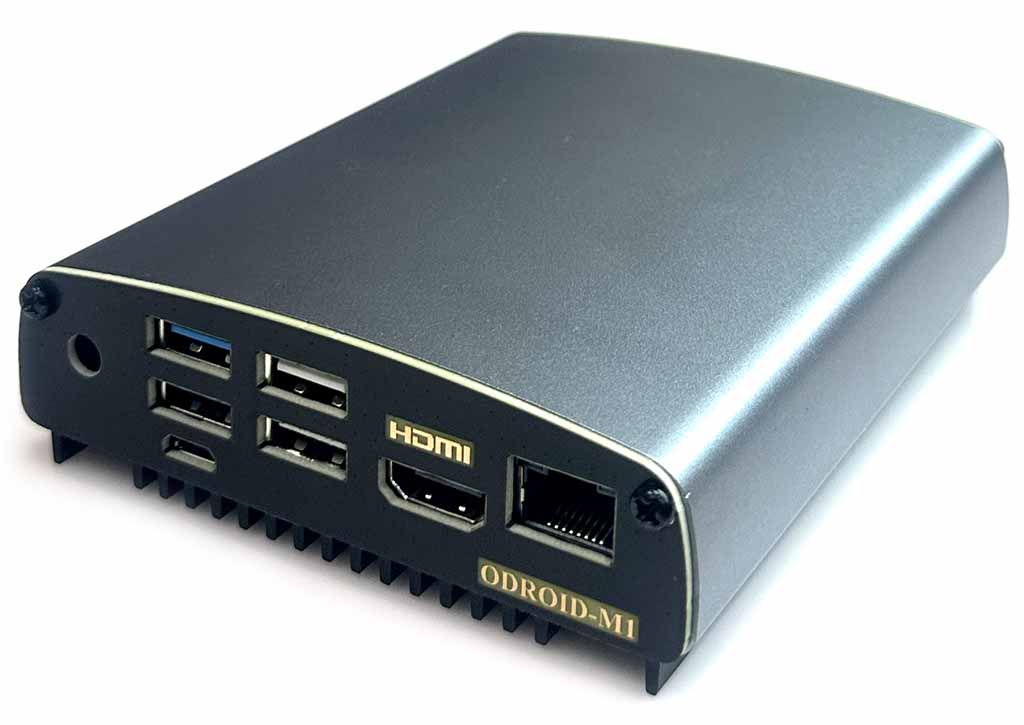Why Odroid is a good alternative to Raspberry Pi 4

Why Odroid M1 8GB is good alternative to Raspberry Pi 4 and other single-board computers to run a Bitcoin & Lightning Node?
I let the numbers speak for themselves:
How much faster really Odroid M1 is vs Raspberry CM4?
| Benchmark | ODROID-M1 (PCIe 3.0 x 2) | RPI CM4 (PCIe 2.0 x 1) | ODROID-M1 is X times faster |
|---|---|---|---|
| fio 1M sequential read | 1646 MB/s | 416 MB/s | 4X |
| iozone 1M random read | 1049.13 MB/s | 210.97 MB/s | 5X |
| iozone 1M random write | 1163.95 MB/s | 188.70 MB/s | 6X+ |
| iozone 4K random read | 43.73 MB/s | 14.77 MB/s | 3X |
| iozone 4K random write | 96.90 MB/s | 25.38 MB/s | 4X almost |
Conclusion, already Odroid M1 is 3-6X faster than Raspberry Pi CM4 As in Odroid M1 board there is 8GB of ram and NVMe faster SSD slot directly in the board it is much faster even with only NVMe PCle 3.0 2 lanes.
According to a review on James A. Chambers’ website, the ODROID-M1 is a good board for experienced SBC users given the current price of Pis.
The article titled “ODROID M1 Review and Benchmarks” by James A. Chambers provides an in-depth review of the ODROID M1 single board computer (SBC). Here are the key points:
- The author recommends using an alternative Ubuntu 22.04.1 image for the ODROID M1. There are also other alternative images available.
- The ODROID M1 requires a 12V 2A power adapter.
- The author has encountered an issue with the M1 where the Petitboot environment sometimes detects the NVMe and other times it doesn’t. This seems to be a common issue with the M1s, with no solution in sight.
- The ODROID M1 has an onboard NVMe slot that works as advertised, a Petitboot boot loader that simplifies many boot operations and adds capabilities such as network booting, and a powerful CPU and GPU capable of excellent desktop performance.
- The author suggests that many people might be using 5V 3A power supplies like for the Raspberry Pi 4 for this device, which could cause problems with NVMe.
- The ODROID M1 has a neural network processing unit (NPU) which can deliver up to 0.8 TOPS. It can run various TensorFlow Lite and ONNX models on Ubuntu Linux OS.
Read the full article from here:
https://jamesachambers.com/odroid-m1-review-and-benchmarks/
Check out the benchmarks Raspberry Pi 4 vs Odroid M1 vs Odroid H3 directly from here:
https://pibenchmarks.com/board/Raspberry_Pi_4_Model_B_Rev_1.4/
5k average (using SSDs) / 13k max (using expensive boards)
https://pibenchmarks.com/board/ODROID-M1/
12k average (using SSDs) / 22k max (using Crucial P3)
Why Samsung 970 Evo Plus is better for running a Bitcoin full node
All RUNaBitcoinNode.com Benchmarks you can find here:
https://pibenchmarks.com/user/RUNaBitcoinNode/
15-16k with Samsung 970 Evo Plus SSD M.2 NVMe M-Key & 11m high be quiet! MC1 heatsink (there is space also for 4mm higher be quiet! MC1 Pro heatsink.
Meaning Odroid M1 8GB RAM should be 3X faster than Raspberry Pi 4 to run a Bitcoin node.
Ubuntu 20.04 Server 15,6 vs Ubuntu Gnome Desktop 16,6k, images from
https://wiki.odroid.com/getting_started/os_installation_guide#tab__odroid-m1
Odroid H3 / H3+ even has NVMe PCle 3.0 4 lanes! And Intel N5105 vs N6005 processor and possibility to add 64GB RAM total (in 2 slots) plus active ventilator and still with relatively small form factor.
https://pibenchmarks.com/board/ODROID-H3/
30k average / 53k max
Specs for Odroid H3 / H3+
- H3 Processor: Intel Celeron N5105, Processor (10nm, Quad-Core, TDP 10W)
- H3+ Processor: Intel Pentium Silver N6005 Processor (10nm, Quad-Core, TDP 10W)
- Base clock: 2GHz, Boost clock: 2.9GHz (H3+ Boost clock: 3.3GHz), L2 cache: 1.5 MB, L3 cache: 4 MB
- Memory capacity: up to 64GB Dual-channel Memory DDR4 PC4-23400 (2933MT/s)
- Memory slots: two SO-DIMM slots, up to 32GB per slot
- Storage: PCIe 3.0 x 4 lanes for one M.2 NVMe storage
- Ethernet ports: 2 x 2.5Gbit Ethernet ports
- SATA ports: 2 x SATA 3.0 ports
- Accelerator: SSE4.2 accelerator (SMM, FPU, NX, MMX, SSE, SSE2, SSE3, SSSE3, SSE4.1, SSE4.2, AES)
- Graphics card: Intel UHD Graphics 24 EUs Turbo 800MHz (H3+: 32 EUs Turbo 900MHz)
- Video outputs: HDMI 2.0 and DP 1.2 multiple video outputs.
- N.B.: No Wifi and Bluetooth for security reasons and really not needed.
More info coming soon but buy now you can read more directly from producers website: HardKernel.com
https://www.hardkernel.com/shop/odroid-m1-with-8gbyte-ram/
https://www.hardkernel.com/shop/odroid-h3/
https://www.hardkernel.com/shop/odroid-h3-plus/
FAQ
What is RPI CM4 and the difference with the Raspberry Pi 4 Model B?
The Raspberry Pi Compute Module 4 (CM4) is a System on Module (SoM) containing processor, memory, eMMC Flash, and supporting power circuitry. These modules allow a designer to leverage the Raspberry Pi hardware and software stack in their own custom systems and form factors. The CM4 harnesses the compute power of the popular Raspberry Pi 4 Model B, bringing it to a smaller form factor suitable for integration into products. You can think of it as the guts of the Raspberry Pi 4 without any unnecessary features. The Raspberry Pi 4 and CM4 are very similar in terms of their core specs and capabilities. Both boards have the same BCM2711 SoC, 1.5GHz quad-core Cortex-A72 64-bit processor, and up to 8GB of LPDDR4 SDRAM. The CM4 is specifically designed for industrial and embedded systems use. As such, it can be used in digital signage, thin clients, and process automation. The Raspberry Pi 4 is the best option for any user looking for an all-around, general-purpose Raspberry Pi.
0 Comments on “Why Odroid is a good alternative to Raspberry Pi 4”